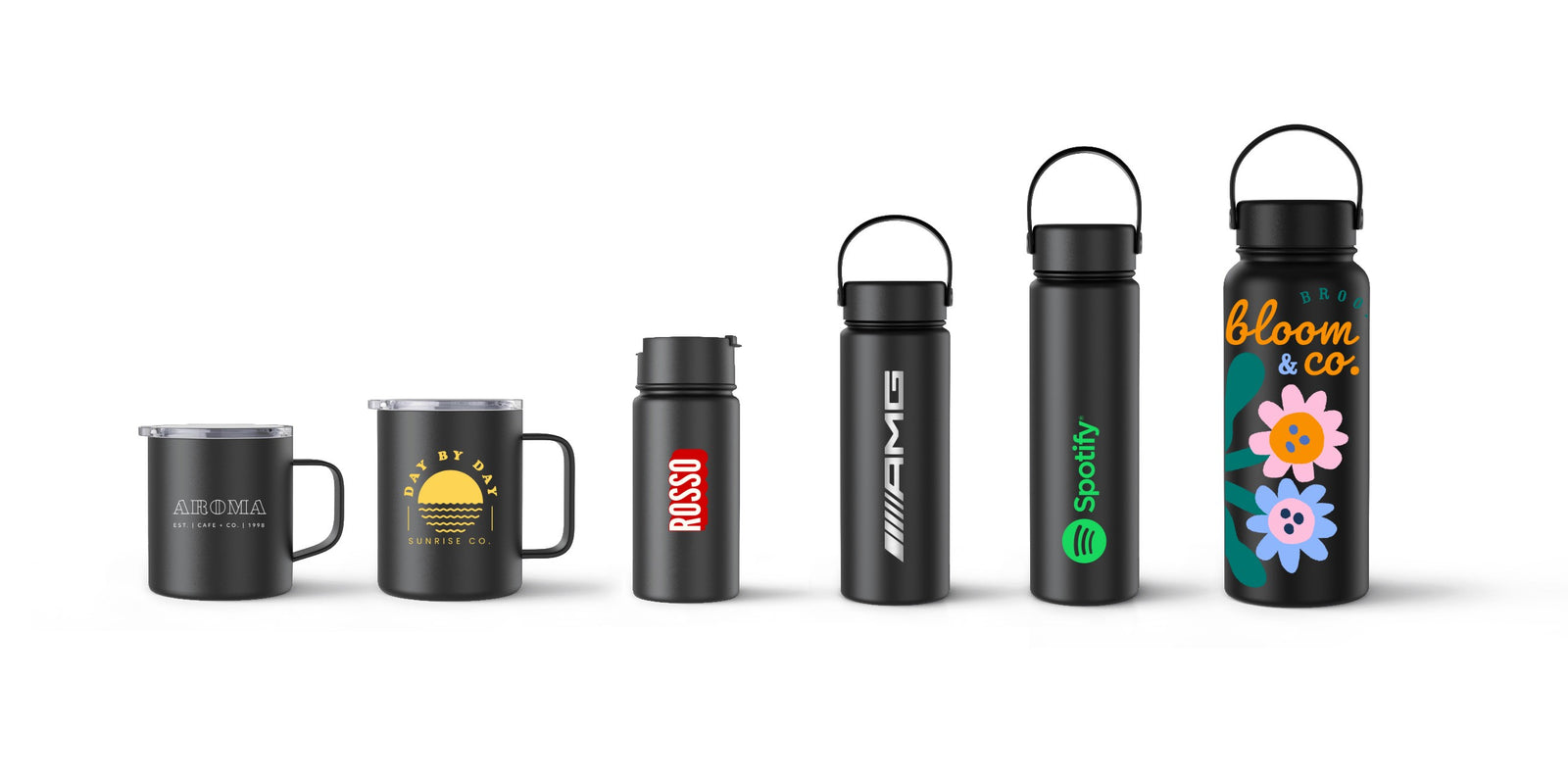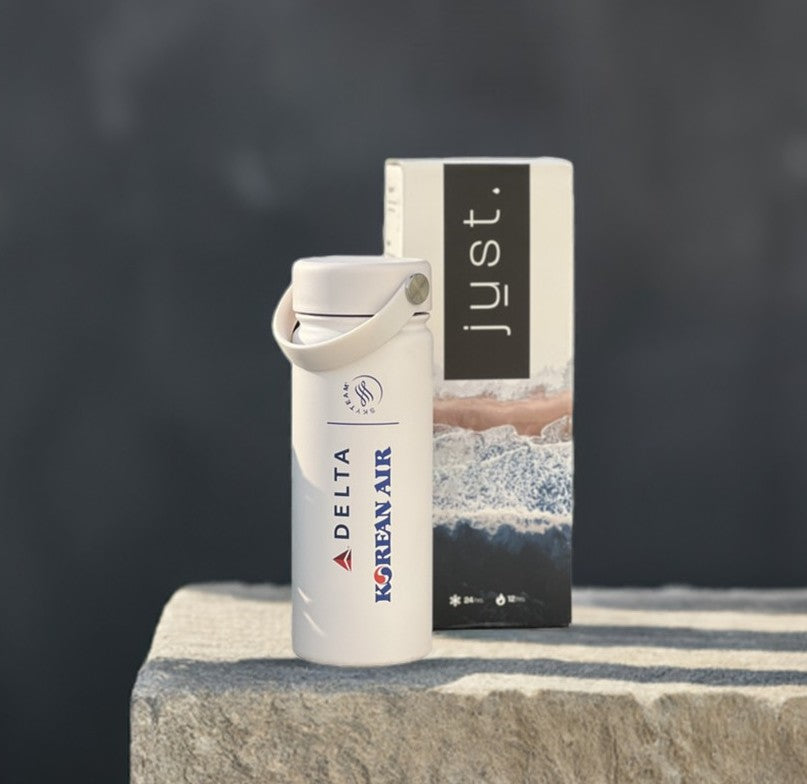Showcase Your Brand With Custom Water Bottles
Elevate your brand with custom-branded bottles from Just Bottle. Perfect for events, giveaways, or corporate gifts.
Enjoy wholesale pricing with a low minimum order of just 50 units, selecting from 39 vibrant bottle colors and a variety of lid options. Plus, every order supports ocean plastic collection, reinforcing your commitment to sustainability.


Make an Impact With Every Order

Low Minimum Order
Get started from 50 units

No Set Up Fee, Access Wholesale Pricing
Our tiered pricing structure ensures that as your order quantity increases, so do your discounts
Complimentary Worldwide Shipping
Free shipping on all orders wherever your business is based
Supports Ocean Plastic Collection
Your business directly funds the removal of ocean plastic, contributing to a cleaner planet




Discover Our Promotional Water Bottles – Handpicked Favorites
Nomad Bottles
Our classic bestseller offers the perfect balance of style and functionality. Available in three essential sizes: 18oz (550ml), 25oz (750ml), and 1 litre.
It’s designed for everyday hydration. Featuring our signature classic lid, this bottle is your go-to companion for work, travel, and adventure
Pioneer Bottles
Designed to keep you hydrated wherever you go. Featuring a straw lid, it's perfect for the gym, outdoor adventures, and everyday use.
Available in two versatile sizes: 18oz (550ml) and 32oz (950ml)
Reclaim Bottles
Designed with parts made from ocean-bound plastic collected from coastlines around the world.
It's ceramic interior ensures a pure, clean taste, while the built-in tea and fruit infusion strainer lets you customize every sip. More than just a bottle, it’s a step towards a cleaner planet
Fully Customizable Colors to Match Your Brand
Choose from our retail color range with a minimum order quantity (MOQ) of just 50 units, select shades from our 39-color chart starting at an MOQ of 100 units, or opt for a Pantone match with MOQ of 500 units.
With these options, your custom bottles can perfectly represent your unique brand identity and vision

Your Logo. Our Bottles

Laser Engraving
Durable and precise finish, ensuring your logo stays sharp and long-lasting
Bottle colours: 39 options
Minimum order: 50 Units

Colour Printing
Eye-catching logos with endless design possibilities
Bottle colours: 39 options
Minimum order: 50 units

360-Degree Printing
Wraps your logo or design fully around the bottle, offering maximum visibility and a striking, continuous look
Bottle colours: 39 options
Minimum order: 300 units

Pantone Colour Matching
Create a custom bottle colour that perfectly aligns with your brand's unique look
Bottle colours: Unlimited
Minimum order: 1000 units
Partner with a Leader in Custom Water Bottles
Businesses choose Just Bottle to provide high-quality, sustainable drinkware that not only elevates their brand but also aligns with their environmental values. Letting us handle your custom water bottle needs ensures you get premium products, expert design assistance, and a seamless ordering process.
Our team takes care of every detail, allowing you to focus on building your brand and connecting with your customers. Just Bottle has crafted eco-friendly, custom water bottles for a wide range of global brands, including:
Premium Materials for a Healthier Choice
At Just Bottle, we prioritize your health and the planet by using recycled 304 18/8 grade stainless steel for our custom branded bottles. Unlike aluminum, our premium stainless steel is free from harmful chemicals and coatings, ensuring a safe drinking experience.
All our materials are BPA-free, providing additional peace of mind regarding your health. This durable material not only enhances the longevity of your bottles but also significantly reduces environmental impact.

If you're looking for a promotional water bottle supplier that delivers premium, sustainable designs tailored to your brand, you're in the right place.
Just Bottle is a leader in creating high-quality, eco-friendly custom water bottles, trusted by businesses worldwide.
Our process ensures that your brand stands out with beautifully crafted, personalized bottles that reflect your values and engage your audience. Here's how it works:
Order the Best Custom Water Bottles in 2025
At Just Bottle, we’re dedicated to creating the best custom water bottles that reflect your brand’s values and commitment to sustainability. Each order not only enhances your brand’s image but also funds the collection of ocean plastic, helping reduce waste and protect the environment. It’s a win for your business, your customers, and the planet.
We understand that your brand is unique, which is why we work closely with your team to bring your vision to life. Our collaborative approach ensures that every custom water bottle reflects your brand’s identity and values.
With years of expertise in sustainable product design and manufacturing, we ensure that your bottles not only stand out but also contribute to environmental change. From design to delivery, we are fully committed to quality and accountability, providing you with full transparency and peace of mind throughout the process.
Ready to Order Your Bulk Custom Water Bottles?
It’s simple to start customizing water bottles for your bulk needs. Here’s how you can move forward:
- Request a Quote – Provide us with your order details, such as the quantity, bottle styles, and design specifications. We’ll respond with a detailed quote, including costs for customization and shipping
- Receive a Free Mockup – Want to see your design before production? Request a complimentary 3D mockup of your bulk water bottles. We’ll create a visual preview for you to review and approve before we start manufacturing your promotional items
- Consult with Our Team – If you have any questions regarding our customization options, production schedules, or eco-friendly practices, our specialists are available to assist you
- Place Your Order – Once you’re ready, confirm your order by approving the mockup and completing the necessary documentation. We’ll then start the production of your custom water bottles in bulk
Just Bottle Helps Brands Make a Lasting Impact
When you invest in custom water bottles with Just Bottle, you’re not just purchasing a product—you’re investing in your brand’s reputation and sustainability efforts.
Our bottles serve as everyday reminders of your brand’s values, building connections with your customers while supporting ocean plastic collection. With a focus on quality, eco-friendliness, and design, we create products that will represent your brand for years to come.
Contact us today to learn more about creating custom water bottles that reflect your brand and make a positive impact.
Learn More About Custom Water Bottles
If you're looking to dive deeper into how custom water bottles can benefit your brand, explore our in-depth resources. From detailed guides on bottle customization to insights on sustainable materials and effective branding strategies, these articles will help you make informed decisions for your next project.
















